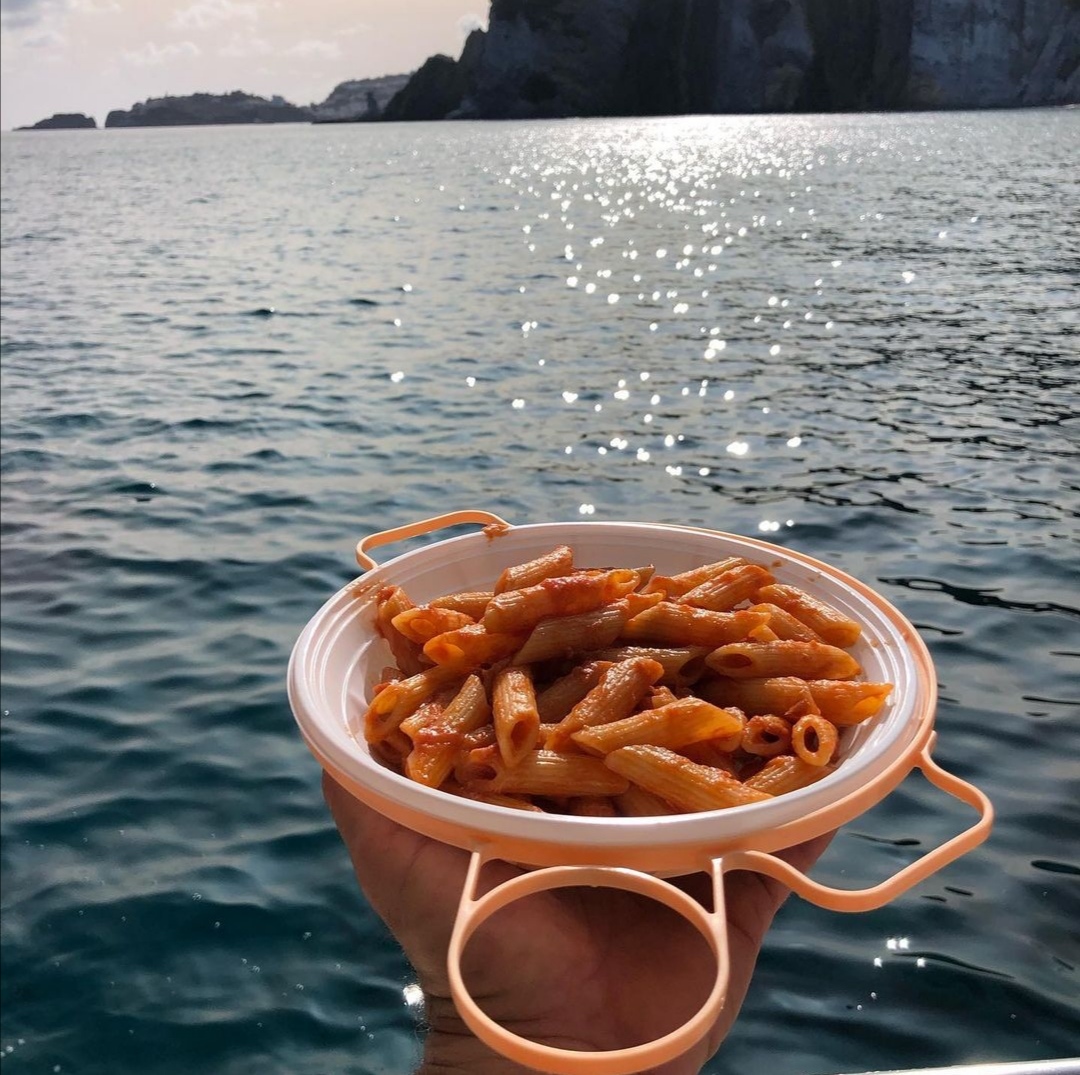Rates
Departure Times
Highlights
Assistance departing from Terracina and arriving in Ponza
experienced Captain
pasta dish on board, wine, water, coffee
Swimming stops in fantastic places
beach STOP in Palmarola
collective Excursion
THE BESTTO VISIT THE TWO ISLANDS
BOOKING REQUESTCLICK HERE
Details
Fast jet motorboat (75 ‘navigation each way) Terracina / Ponza / Terracina + the Grande Cruise Ponza and Palmarola in tourist motorboat accompanied by sailor-guide certainly represents the “best combination” to visit these two extraordinary islands for the first time. The itinerary that we will follow is the ideal solution for the tourist who wishes to have a panoramic view of the two islands; starting from the colorful port of Ponza, we will first skirt the southern side of Ponza, with a visit to the caves of Pilate, what remains of an ancient Roman work also known as the Roman moray, which is part of a sumptuous imperial residence. The marine system includes four covered pools, connected to each other by a system of submarine tunnels and niches carved into the rock to house the statues of pagan gods. The caves bear the name of Pilate, a reckless scion of a noble Roman family, sent to Ponza by the governors of Rome, with the task of quelling a revolt. Continuing the navigation we will meet the stacks of the Madonna, which take their name from an ancient effigy depicting the nativity of the Virgin, kept in a church, then rebuilt, and now the Cemetery Chapel. We will skirt the area of the old Parata, the stacks of Calzone Muto and the suggestive cliff among the pastel colors of the Mediterranean scrub, the Scarrupata. In the southernmost part of the island, we will meet the Faraglione della Guardia which takes its name from the mountain above, whose peak is the highest on the island (279 m) and immediately after the suggestive Faro promontory. In Punta del Fieno, you can admire the spectacular terraced vineyards from the sea and immediately afterwards we will reach the fascinating bay of Chiaia di Luna with its majestic white-yellow tuff rock face; an enchantment of Nature. The bay offered, already to the Romans, an important shelter, when the Levant was raging and the port could not be landed. From Punta di Capo Bianco, we will head towards Palmarola (about 40 ‘navigation); the first point touched will be Punta Vardella, in the southernmost part of the island, then the Suvace rock, Cala Brigantina, which takes its name from the pirates who found shelter there in the Middle Ages, the magnificent stacks of Mezzogiorno and an enchanting gorge that we will cross in motorboat. This will be followed by the faraglione of S. Silverio on whose top stands a small chapel, the faraglioni and the caves of the Galere and the inevitable stop at the pebble beach of the French dominated by a tufaceous rocky wall where you can see numerous cave houses built by the first colonists sent. by the Bourbons to cultivate the land. We will continue the navigation along the marvelous coastal area of the Cathedral, formed by a spectacular conformation of the tufaceous rock, covered with dwarf palms and a series of sea caves; we will now leave Palmarola, to return to Ponza and continue the circumnavigation interrupted by the morning and dedicate ourselves to the northern part of the island. We will meet: the enchanting stacks of Lucia Rosa, (the name is linked to a young girl, Lucia Rosa, who lost her life there by throwing herself from above, for an impossible and denied love: she comes from a rich and noble family, he a simple and humble fisherman), the promontory of Forte Papa (on the top of which the remains of the military construction commissioned by the Farnese stand out), cala Feola with its natural pools, cala dell’Acqua (where there are the remains of the bentonite mine), cala Fonte , Cala Felci (the latter takes its name from the officinal herbs that grow in the area and once used by the monks on the island). We will double the northern tip passing through the nearby islet (nowadays private) of Gavi, then we will meet Cala Gaetano with the pastel colors of the rocks and the sea-green seabed, the Natural Arch an incredible arch-shaped stack, Cala Inferno, Cala del Core, the bay of Frontone and the village of Santa Maria. Finally, we return to the pretty port whose semicircular shape was commissioned by the Bourbons, to whom the Pontine islands belonged and designed by the architect Francesco Carpi, a pupil of Luigi Vanvitelli, known for having built the Royal Palace of Caserta.

